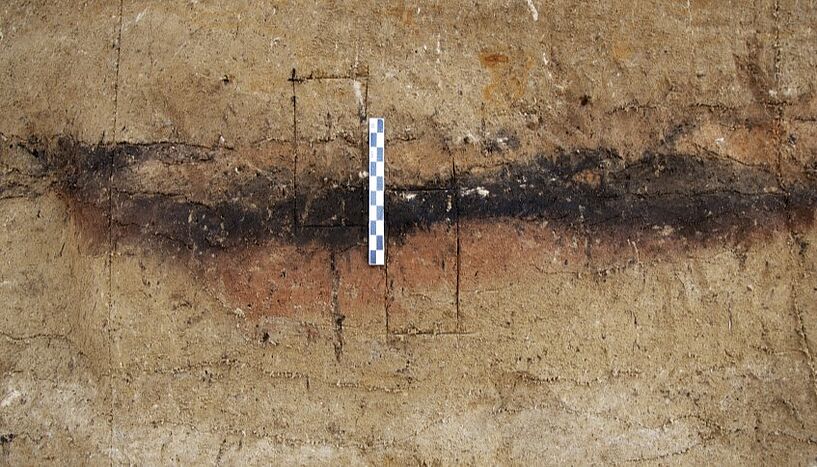
Fig. 1: Section through the large fireplace 1. C: Philip R. Nigst.
Differences between the fireplaces indicate ingenious use
Whether for cooking, heating, as a light source or for making tools - it is assumed that fire was essential for the survival of people in the Ice Age. However, it is puzzling that hardly any well-preserved evidence of fireplaces from the coldest period of the Ice Age in Europe has been found so far. A group of scientists led by the University of Algarve and the University of Vienna has now been able to shed some light on the mystery of Ice Age fire. Their analysis of three hearths at a prehistoric site in Ukraine shows that people of the last Ice Age built different types of hearths and used mainly wood, but possibly also bones and fat, to fuel their fires. The results have been published in the journal Geoarchaeology.
Archaeological research shows that Homo sapiens in Europe during the Upper Paleolithic period, between 45,000 and 10,000 years ago, used fire in a variety of ways. "Fire was not just about keeping warm; it was also essential for cooking, making tools and for social gatherings," says Philip R. Nigst, one of the lead authors and an archaeologist at the University of Vienna. It has often been assumed that fire was essential for the survival of hunter-gatherers in Ice Age Europe. Surprisingly, however, there is little well-preserved evidence of fire use from the coldest period of the Ice Age - between 26,500 and 19,000 years ago - in Europe. "We know that fire was widespread before and after this period, but there is little evidence from the height of the Ice Age," says William Murphree, lead author of the study and geoarchaeologist at the University of Algarve.
The current study is all the more significant because the scientists discovered and analyzed three hearths at a prehistoric site in Ukraine. This was possible thanks to a series of innovative geoarchaeological techniques. Through microstratigraphic analysis, micromorphology and colorimetric analysis, the team identified three simple, flat, wood-fired hearths. One interesting finding from this was that these fires reached temperatures of more than 600°C, which proves sophisticated mastery of pyrotechnics even in the face of extreme environmental stresses.
The analysis also shows that humans used wood as their main fuel during the peak of the Ice Age, with charcoal analyses indicating spruce wood. However, other fuels such as bone or fat could have been used. "Some of the animal bones found at the site were burnt in a fire with a temperature of over 650 degrees Celsius. We are currently investigating whether they were used as fuel or just accidentally burned," explains Marjolein D. Bosch, one of the authors and an zooarchaeologist at the University of Vienna, the Austrian Academy of Sciences and the Natural History Museum Vienna.
All three fireplaces are open and flat. However, the new results suggest that the use of fire was sophisticated, as the fireplaces were likely to have been built and used differently in different seasons. One of the three fireplaces is larger and thicker, suggesting that higher temperatures were achieved here. "People perfectly controlled the fire and knew how to use it in different ways, depending on the purpose of the fire. But our results also show that these hunter-gatherers used the same place at different times of the year during their annual migrations," explains Nigst.
Despite these new findings, the small number of fireplaces from the Last Glacial Maximum remains puzzling. "Was most of the evidence destroyed by the ice-age-typical, alternating freezing and thawing of the soil?" asks Murphree. "Or did people not find enough fuel during the Last Glacial Maximum? Did they not use fire, but instead relied on other technological solutions?" adds Nigst. By further uncovering the role of fire in human evolution, the researchers hope to shed light on what is arguably one of the most fundamental technologies that has shaped our species' success in populating every corner of this planet.
Original Publication:
William Chase Murphree, Cruz Ferro‐Vázquez, Larissa Kulakovska, Vitalii I. Usyk, Olesia Kononenko, Marjolein D. Bosch, Paul Haesaerts, Freddy Damblon, Stéphane Pirson, Philip R. Nigst & Vera Aldeias: Fire use during the Last Glacial Maximum: evidence from the Epigravettian at Korman' 9, Middle Dniester Valley, Ukraine. In Geoarchaeology, 40(2), e70006, 2025
DOI: 10.1002/gea.70006
Pictures:
Fig. 1: Section through the large fireplace 1. C: Philip R. Nigst.
Fig. 2: The large fireplace 1 during the excavation. C: Philip R. Nigst.
Fig. 3: Excavation site Korman' 9 located at the shore of the Dnister river in Ukraine. C: Philip R. Nigst.
Fig. 4: The large fireplace 1 covered by 2.5 metres of loess sediments. C: Philip R. Nigst.






